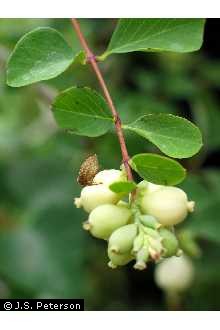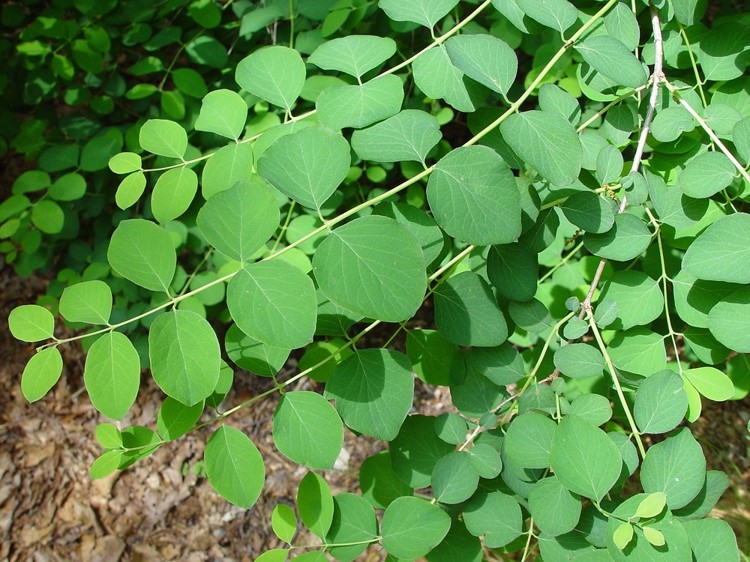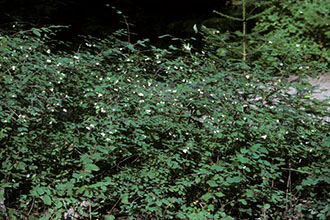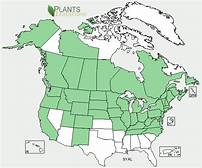Taxonomy: Kingdom - Plantae (plants). Subkingdom - Tracheobionta (vascular plants). Superdivision - Spermatophyta (seed plants). Division - Magnoliophyta (Flowering plants). Class - Magnoliopsida. Order - Dipsacales. Family - Caprifoliaceae . Genus -Symphoricarpos Duham - Symphoricarpos albus (L.) S.F. Blake
Ecology: Across its distribution, common snowberry is classified as dominant or subdominant in a variety of habitat and community types and vegetation associations. Species commonly associated with common snowberry include oceanspray (Holodiscus discolor) in California's hardwood rangelands , ninebark (Physocarpus malvaceus) in Oregon, bearberry (Arctostaphylos uva-ursi) in south Dakota and eastern Wyoming [3], and Idaho fescue (Festuca idahoensis) in eastern Washington.



